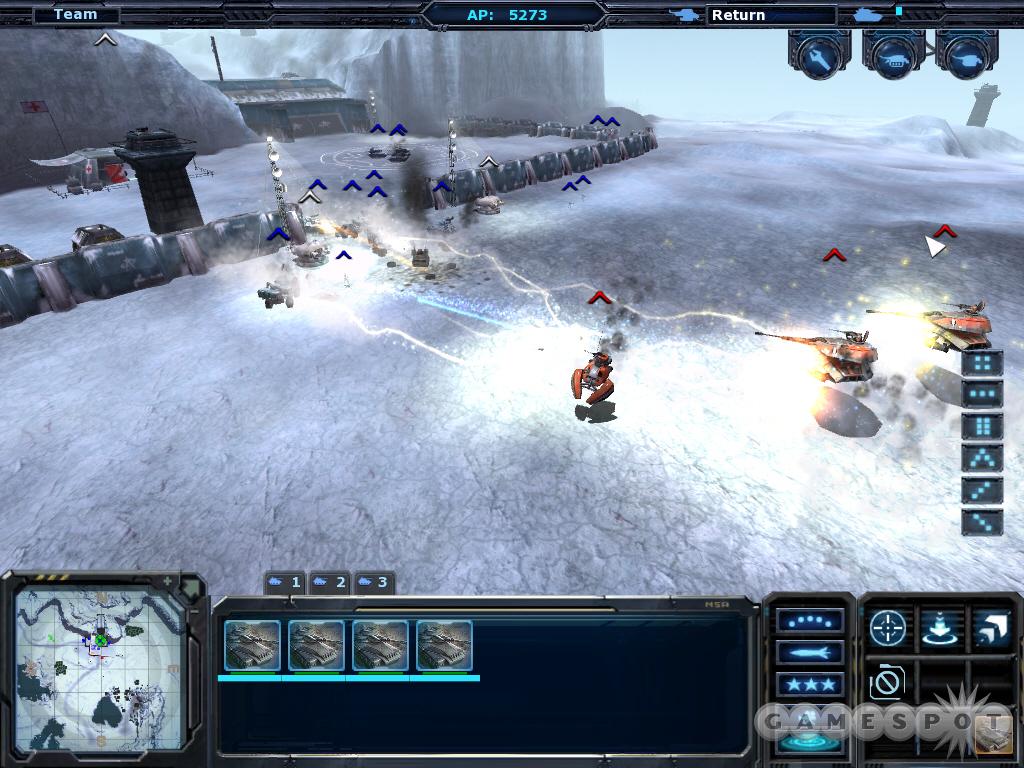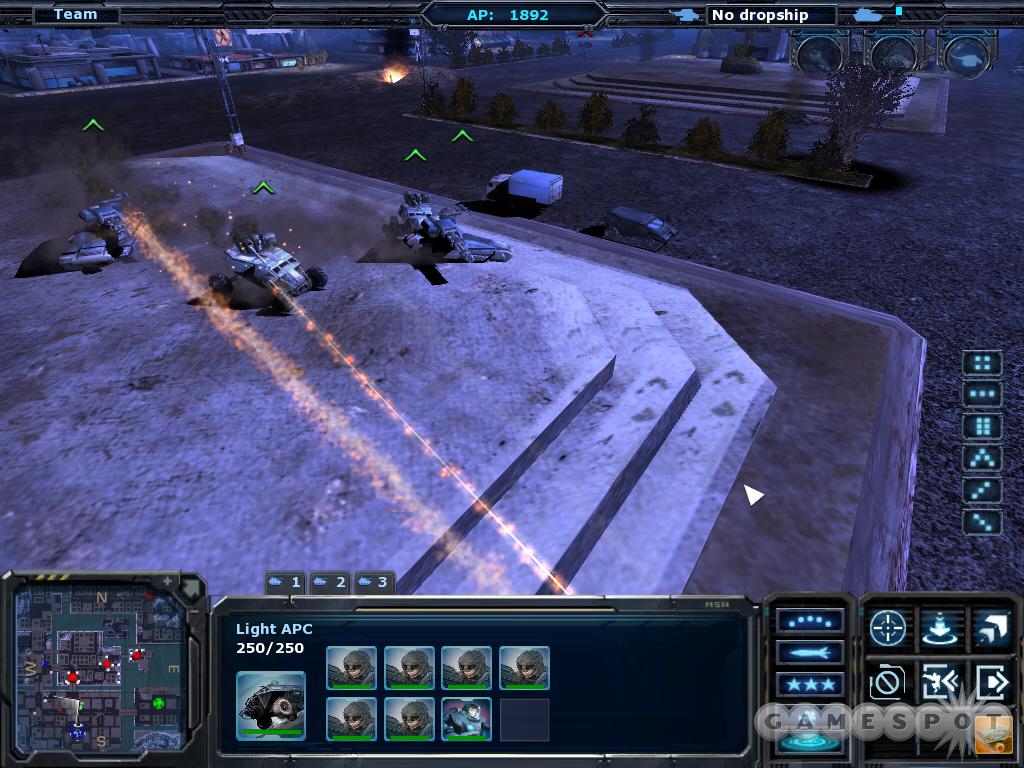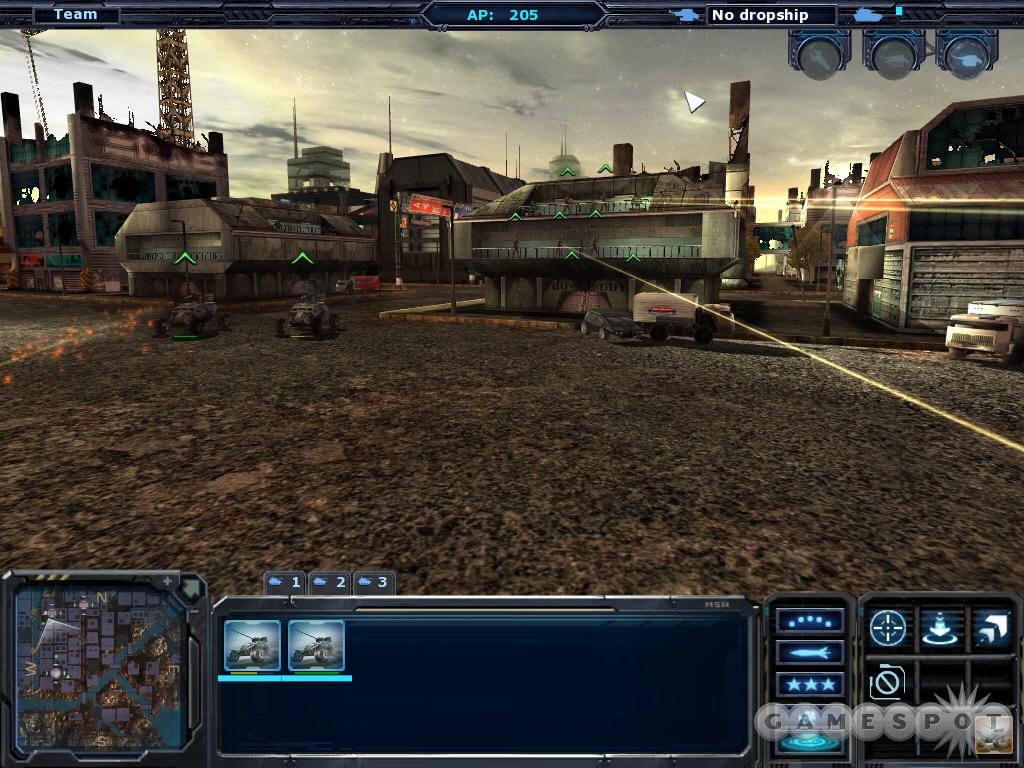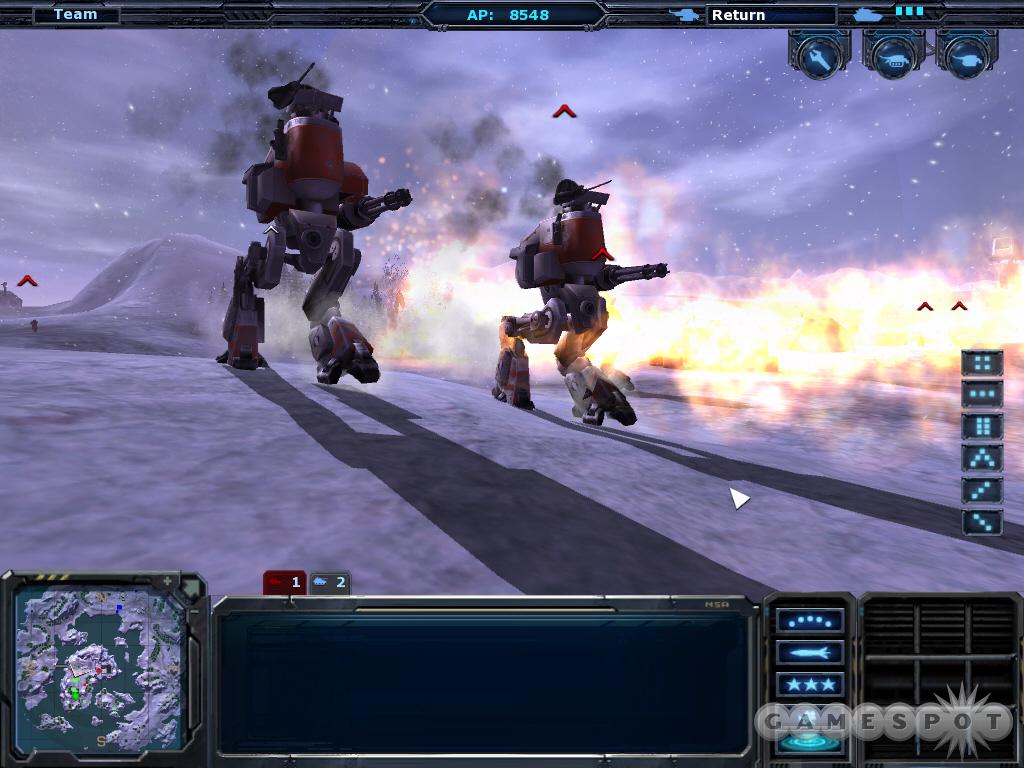Ground Control II Hands-On Impressions
We get the opportunity to take this sci-fi tactical combat game through its paces.
The original Ground Control was one of the first games to define the real-time tactical combat genre, and one of the better ones as well. What is real-time tactical combat? Imagine a traditional real-time strategy game, but strip out all the elements of base construction, resource gathering, and unit building. Without having to worry about those issues, you can focus on maneuvering your units around the battlefield and using the best tactics to crush the enemy. Four years have now passed since Ground Control was released, and Swedish developer Massive Entertainment is nearly ready to issue the sequel, Ground Control II: Operation Exodus. Thankfully, we've had the opportunity to play around with a near-final version of the game to get a look at what Massive has been working on.
Ground Control II takes place centuries after the events in the original Ground Control; the colonies of humanity have been abandoned after the collapse of the interstellar corporations. Isolated and left alone for centuries, some of these worlds form their own coalition, the Northern Star Alliance. And then one day, the Empire of Terra appears and invades Morningstar, home of the NSA. The war is going very badly for the NSA until a mysterious object falls from orbit and offers both a mystery and a chance to turn the tide. In the game, you'll play as Major Jacob Angelus of the NSA. The story is split into two single-player campaigns, which lets you play from the perspective of the NSA and the Vorlons, a new alien race.

The mission structure in Ground Control II is very similar to that in the original game. Missions usually start off with a cinematic briefing, explaining the current situation and what your objectives are in the mission. You'll start with a predetermined force, and as you progress through a mission, destroy enemy units, and capture objectives, you'll earn acquisition points that can then be used to request new units.
Though set in the distant future, most of the NSA units should feel familiar to gamers, as most of them are futuristic versions of modern-day military units. There are powerful infantry, snipers, recon terradynes (basically high-speed, wheeled scouts), and potent mobile artillery. The Terran Empire units, on the other hand, have a different look and feel, and they feature a lot of flying and hovering units as well as giant walking tanks.
Controlling your units is as simple as it is in most real-time strategy games; all you have to do is just point and click with the mouse. You can assign units to groups to make it easy to select them, and you can also assign units to different formations, including line, box, column, and wedge, to adjust to the tactical situation. Infantry can load up into armored personnel carriers for quicker transport, but they're much more effective when dismounted on foot. You can garrison infantry inside buildings, and one neat trick is that you can select on which side of the building you want the infantry to concentrate. Once garrisoned, infantry gain cover and firing bonuses due to their elevated position. This is a particularly useful tactic in the narrow streets of a city, as you can garrison troops to both sides of a street and draw enemy units into a concentrated kill zone.

The focus of the game involves maneuvering your forces so that you maximize the amount of firepower on the enemy. Like in most strategy games, there's a rock-paper-scissors relationship between units, so you have to recognize how to counter what the enemy throws at you. If infantry are under attack by tanks, you either need to bring in armor of your own or you can order your infantry to use their secondary fire mode, which is a powerful missile that can shred tanks. However, infantry are immobile while in secondary fire and they can't fire at enemy infantry, so you have to make sure you have a balanced, combined arms force.
Fire Missions
It's unavoidable to take losses. While you can't build new units, you can requisition new ones, which is where the dropship comes in. As noted earlier, you earn acquisition points as you progress through a mission. When you call up the dropship interface, you're given a list of units you can requisition, and the only limits are the number of acquisition points you have and the available space on the dropship. A dropship only has a limited number of slots; vehicles usually take up two slots, while a single infantry unit takes up one slot. However, you can use acquisition points to upgrade the dropship's carrying capacity, thus increasing the number of units it can carry. There's also an option to upgrade the dropship's weapons and armor and use it as a gunship over the battlefield, but if it's shot down you will lose your primary means of reinforcement. 
The battlefields in the game vary quite a bit. The earliest battles take place in the gutted remains of a city where there are plenty of buildings to take cover in and narrow streets that make maneuvering of vehicles difficult. But then the game shifts to the wilderness, where there's a lot more open room and the buildings are replaced by trees and forests. Vehicles can't pass through forests, but infantry can, so you can hide infantry in forests to ambush passing units and you can also use forests to ditch pursuit by enemy vehicles.
As you progress through the campaign, you gain access to more powerful units and vehicles, such as the main battle terradyne (basically a tank) and the mobile artillery gun. The latter is one of the treats of the game, though it's a bit tricky to use. When you designate a target for it, the artillery tube elevates and it starts to pump rounds high into the sky. You have be careful where you aim because it takes quite a while for the rounds to fall back to earth, which makes it almost impossible to hit a moving target. But if you can bottle up enemy units and grind them to a halt, you can drop a devastating salvo on top of their heads. In addition to mobile artillery, you'll occasionally have access to supporting artillery (this represents artillery units that are off the map but that can still be called on for fire support). In those cases, you'll have a limited number of salvos that you can call upon, so you have to use them wisely.
One of Massive Entertainment's goals for the sequel was to raise the level of immersion, and the new graphics engine is quite an advance from the original game. It features many of the latest hardware effects, including realistic water and highly detailed environments. But it also allows you to zoom in very close to the action, to the point where you can practically look your infantry in the eyes. What Massive wanted to do was increase the sense that you're leading real soldiers rather than a bunch of pixels on the screen. The engine is also great at rendering tons of little details, from the way recon terradynes bounce around on their wheels to the road signs on city streets. And the game has great particle effects that can make battles look like Fourth of July fireworks.

From all appearances, Ground Control II looks to be a worthy successor to the original Ground Control. Four years is a long time to go between sequels, but Massive looks like it has invested quite a bit of thought and effort into the project. We're told that Massive is especially proud of the game's story, and the early missions have definitely piqued our curiosity as to where the plot is heading. And though we didn't have a chance to try out multiplayer, Ground Control II will support up to eight players in a competitive match and four players in a cooperative game. Massive is currently putting the finishing touches on the game, and it should ship next month.
Got a news tip or want to contact us directly? Email news@gamespot.com
Join the conversation